This week’s Buildings Focus took Agriland to just outside Claremorris in Co. Mayo to speak to a new entrant to dairy in 2021 about his new milking facilities.
Donal Ronayne and his uncle Liam Trench formed a partnership which saw them move into supplying milk in 2021.
The aim this year is to milk 205 cows and with 25 left to calve, Donal took time out of his busy schedule to speak about the farm’s move to dairy and how they set up to make this move become a reality.
Since graduating from University College Dublin in 2017 with a degree in Dairy Business, Donal took up roles with Western Pastures in Roscommon and on another dairy farm in Tuam, Co. Galway before he and his uncle decided to come together and go down the route of dairy on a farm which was home to drystock prior to that.
Donal’s uncle Liam also runs an agricultural contracting business as well as continuing to keep some drystock on the farm. While Donal himself comes from a drystock farm himself that his father runs.
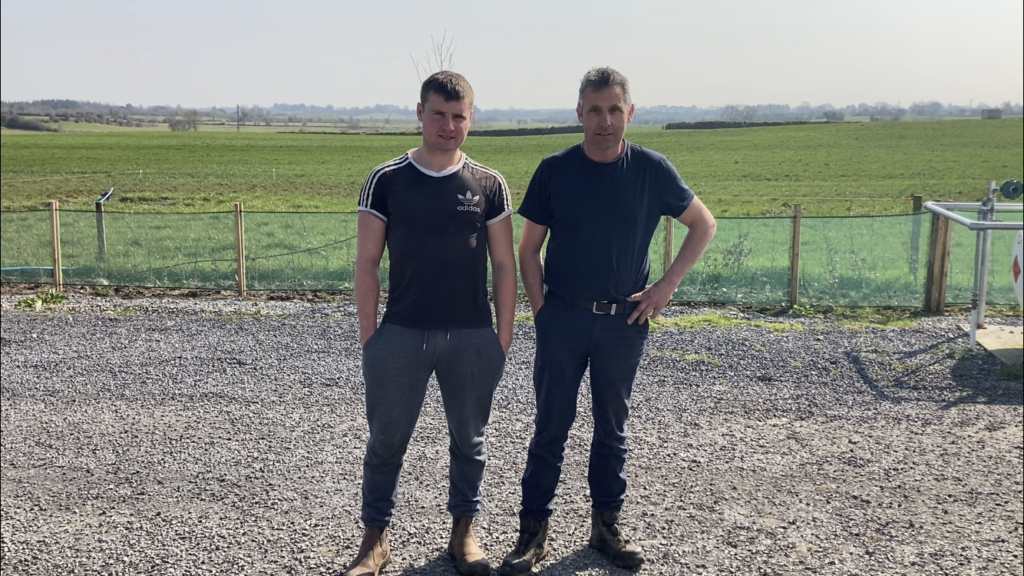
Speaking to Agriland outside the new dairy unit Donal said: “My uncle and I had discussions and spoke about what was the most profitable system going forward for the farm.
“I have ties at home and I wanted to start up my own herd of cows and Liam was all for that too.
“I have always had a passion for dairy and it’s always where I’ve seen myself forging a career in.
“Liam would have had a strong herd of sucklers and finished a lot of cattle and store lambs alongside the contracting business, but as everyone knows, the beef game has been getting tougher and margins have been getting tighter and tighter.
“So back in 2019 going into 2020 we looked at the possibility of coming together and going in partnership together.
“So towards the back end of 2020 we began work on making the transition to dairy and now, we are entering year two off the back of a good first year in milk.”

Design
The farm prior to the move to dairy was home, as mentioned, to cattle and sheep, therefore, existing sheds on the farms were converted and extensions added to be able to accommodate just over 200 cows with cubicles and also for calves to be reared.
The stand alone new building, which is the focus of this article, constructed to facilitate the move to dairy consists of a milking parlour, handling facilities, collecting yard, feed space, bulk tank room, office and kitchen along with a storage facility also at the side of the building.
The planning and design of the new dairy unit was completed by Aidan Kelly of Agri Design and Planning Services (ADPS).
Below, you can see a detailed drawing of the new dairy unit.

A look inside the new dairy unit
The uncle-and-nephew team opted to go with a 26-unit swingover milking parlour.
Having worked over in New Zealand as part of his work experience for his college course, Donal was in the land where Waikato milking parlours first came about and got to see first hand what they were like to work with.
Having visited other farms as well here at home in Ireland, he and his uncle decided on a Waikato swingover milking parlour.
The main features of the parlour include automatic cluster removers, auto-wash system and batch feeders with a stainless steel trough running the length of the parlour on both sides. An 18,000L Mueller bulk tank was also purchased to hold milk produced by the 200 odd cow herd.

Zig zag rump rails were installed to angle cows nicely for cluster attachment in the pit and also to limit their movement. A steel bar above the entire length of the trough in the parlour was fitted to prevent the cows from jumping up onto the trough.

The fact Donal and Liam are milking a crossbred herd of cows, the duo wanted to limit the space that the cows could move while standing in the parlour so as to make life easier when milking them, so they went with a smaller standing space of 1.8m – which helps to keep the cows nice and tight together during milking.
Cows exit the parlour once the scissor gates are raised manually in the pit and cows are kept in and prevented from backing out of the parlour when a wrap-around gate closes in at the back of the parlour.
A collecting yard with a capacity of just over 250 head of cows, when you take into account 52 can go straight into the parlour at milking times has two access points for cows to make their way into it.
A slatted tank goes along the width of the collecting yard and from the point where the slat ends to where the parlour starts, a sloped concrete surface was laid down.
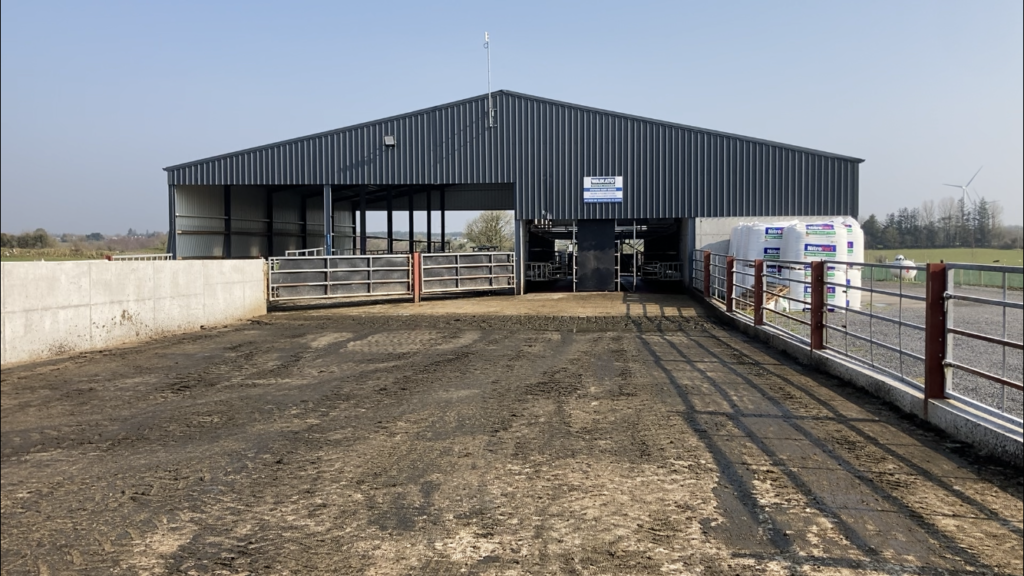


Once cows have left the parlour, they will either – depending on the time of the year – head out to grass like they are now or at the shoulders of the year, they turn back up towards the collecting yard where a separate passageway can be found with feed barriers going the length of it which leads back up to the cubicle shed; this passageway also acts as the pathway to the collecting yard from the main grazing block.
This passageway is grooved to prevent cows from slipping and part of it is roofed as it under the same roof that the parlour and handling facilities are under. If calving space was tight over in the existing calving shed, the plan was to flip this roofed passageway into a large calving pen. However, the need for this hasn’t occurred yet Donal said.
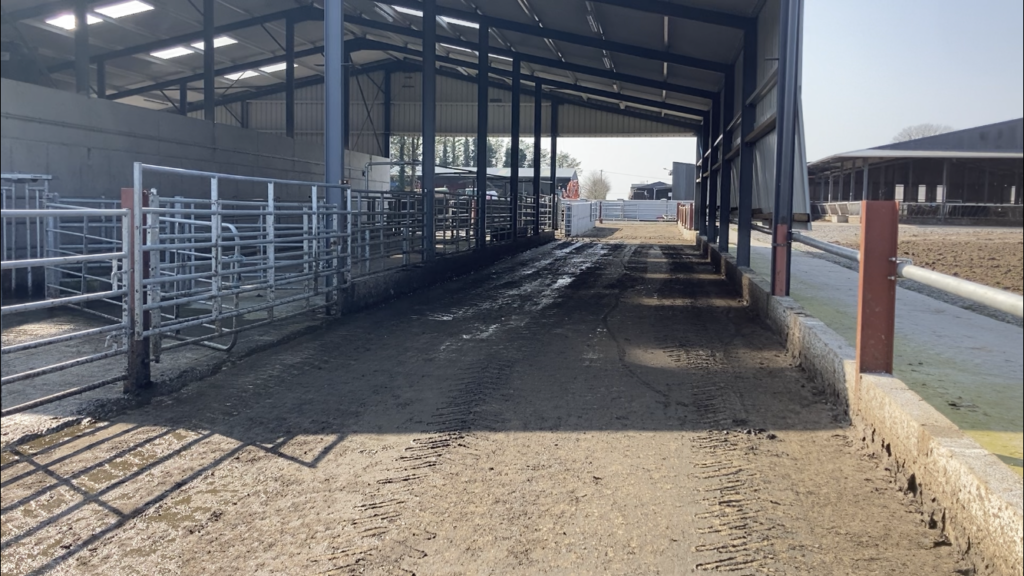

Wedged in between this passageway/feed space and the milking parlour is a fine handling set up.
Donal and Liam installed a crush with the beauty of it being cows can be handled from either side of it. Furthermore an AI crush was also fitted into this area and in the coming weeks will be a hive of activity once breeding starts.
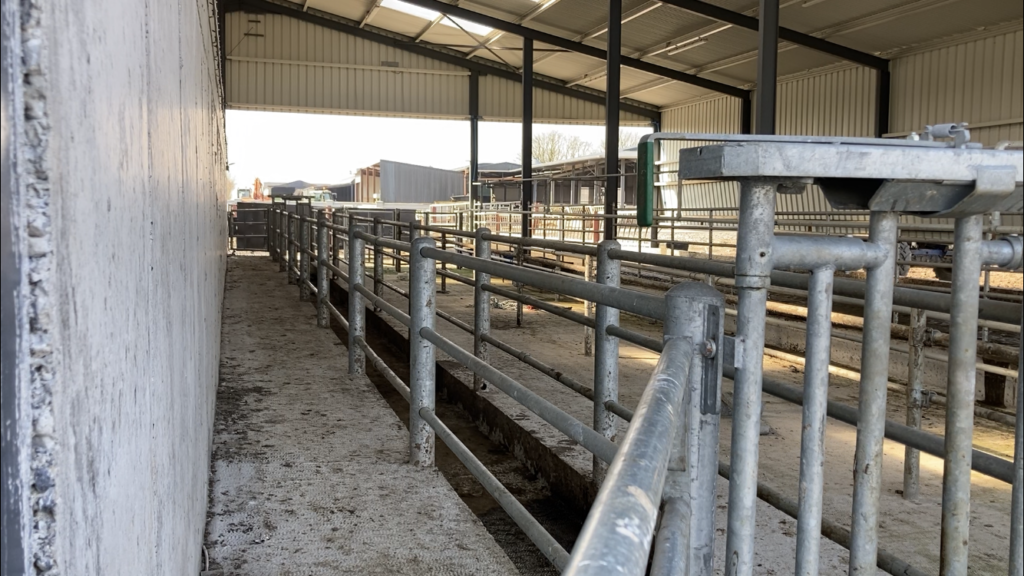

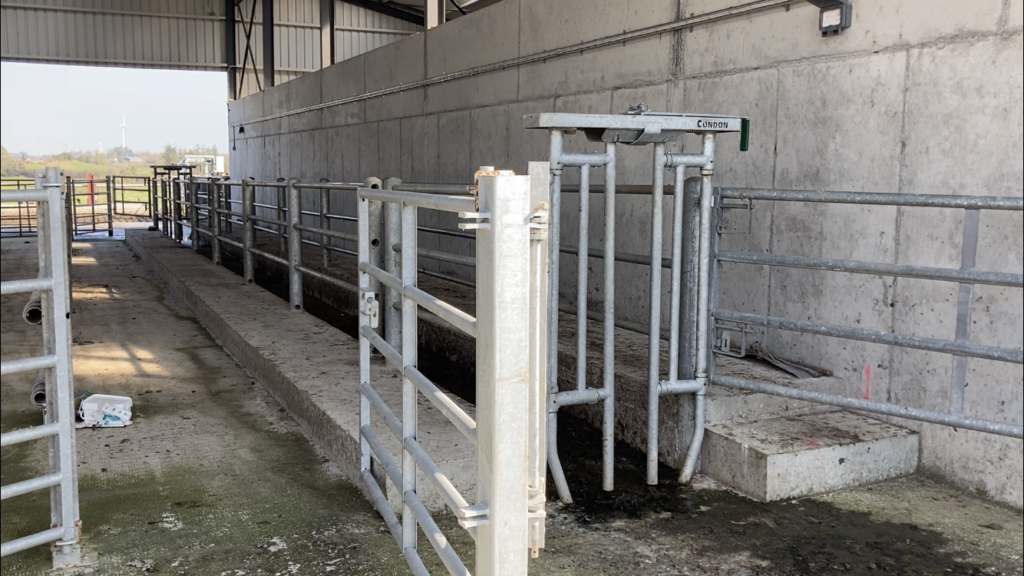
Lastly, a Saber drafter was installed. Once cows leave the parlour, Donal can direct them down into narrow race towards the drafter and as they do, they walk through a footbath. A small pen to the right of the drafting system is where drafted cows are held with a feed barrier in this pen also.
To shunt cows down the drafting race, stockboard is fitted onto the gates to direct them down the race to either back out to grass or into the drafting pen.
When the drafting system or footbath isn’t required, Donal can open up a gate one side of the drafter to just let cows straight back out to the main roadway up to the grazing platform.




On its own, to the side of the shed is a handy little storage area where the mobile calf feeder among others bits and bobs are stored. While an office and kitchen are located also along this side of the building.
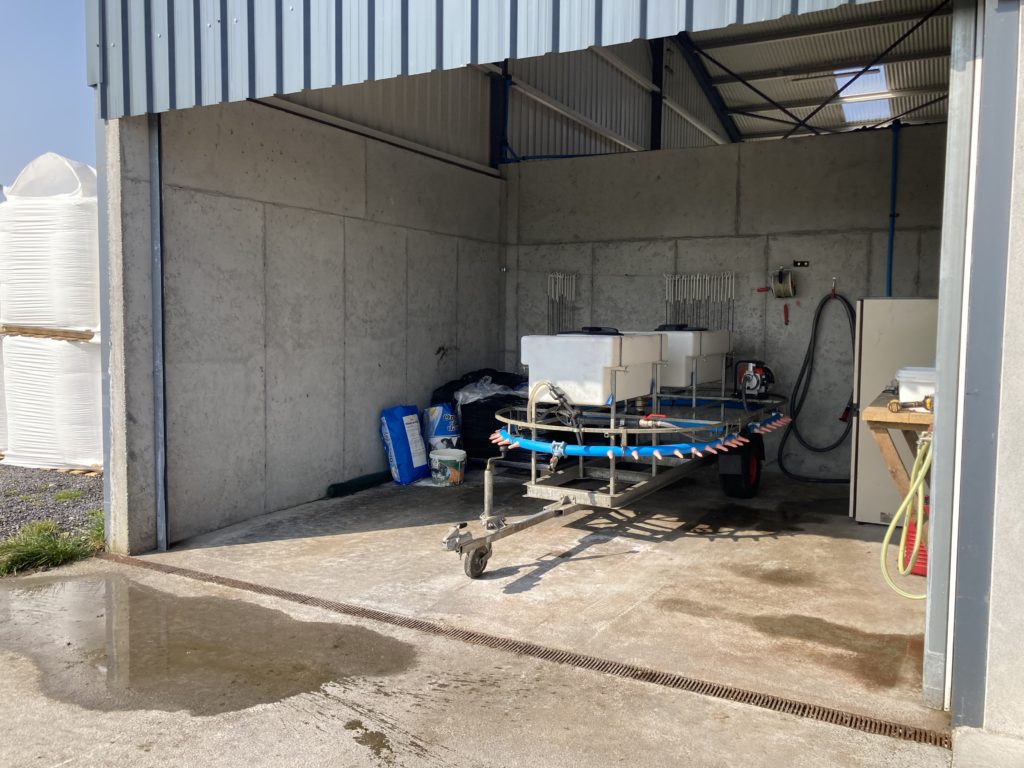
Cost
Due to being a young farmer, Donal was able to avail of a 60% grant under the Targeted Agricultural Modernisation Scheme.
The overall cost of the new build came to €340,000 including VAT. However, when the value of the grant and VAT is reclaimed, the cost of the build is standing at €228,000 approximately.
The main contractors involved in the build were Michael Roche who erected the shed, with the shed being supplied by DG Roofing. Kenneth Mullaney did all the shuttering with Donal and Liam completing the rest of the concrete work themselves amongst many other jobs in the build which helped to bring down costs.
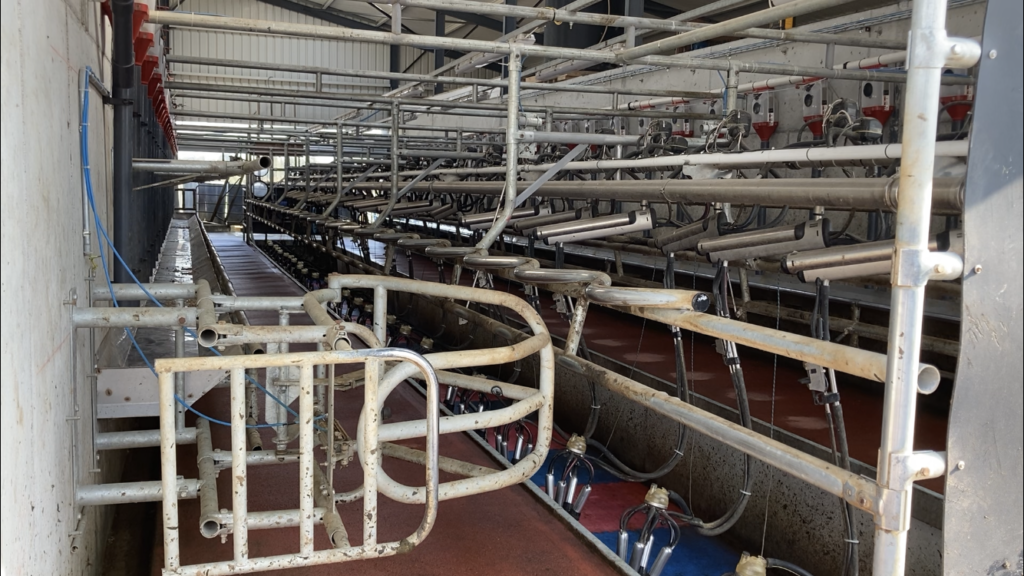
Speaking about the decision to make the jump to dairy, Donal said: “Very happy we made the move.
“It’s not been without it’s challenges particularly at the start last year, it was tough going but we finished the year out strongly.
“We started out with all heifers and they finished up averaging 400kg of milk solids which we were very happy with.
“I’m very happy with the milking machine, it hasn’t given us an ounce of bother once we got up and running properly.
“Now that we have a year under our belt, hopefully this year we can push on again and improve the performance across the herd and just get better at what we do.”

